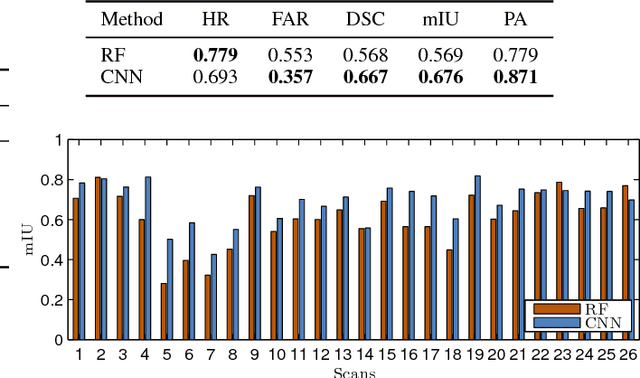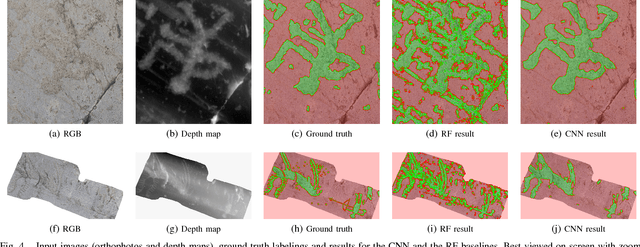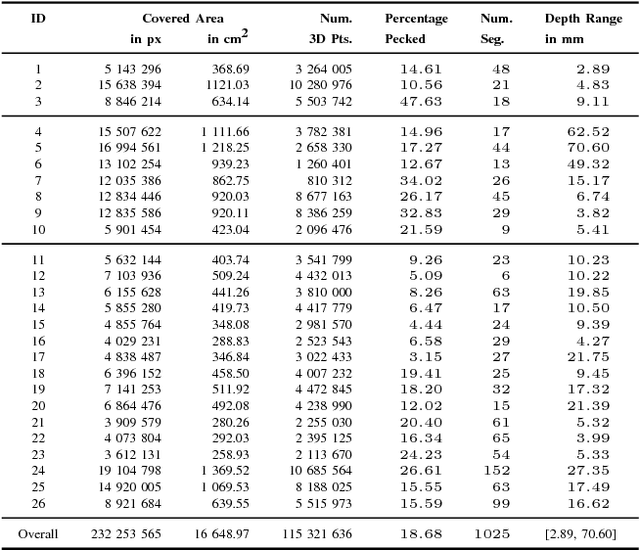Markus Seidl
Cross-codex Learning for Reliable Scribe Identification in Medieval Manuscripts
Dec 07, 2023



Abstract:Historic scribe identification is a substantial task for obtaining information about the past. Uniform script styles, such as the Carolingian minuscule, make it a difficult task for classification to focus on meaningful features. Therefore, we demonstrate in this paper the importance of cross-codex training data for CNN based text-independent off-line scribe identification, to overcome codex dependent overfitting. We report three main findings: First, we found that preprocessing with masked grayscale images instead of RGB images clearly increased the F1-score of the classification results. Second, we trained different neural networks on our complex data, validating time and accuracy differences in order to define the most reliable network architecture. With AlexNet, the network with the best trade-off between F1-score and time, we achieved for individual classes F1-scores of up to 0,96 on line level and up to 1.0 on page level in classification. Third, we could replicate the finding that the CNN output can be further improved by implementing a reject option, giving more stable results. We present the results on our large scale open source dataset -- the Codex Claustroneoburgensis database (CCl-DB) -- containing a significant number of writings from different scribes in several codices. We demonstrate for the first time on a dataset with such a variety of codices that paleographic decisions can be reproduced automatically and precisely with CNNs. This gives manifold new and fast possibilities for paleographers to gain insights into unlabeled material, but also to develop further hypotheses.
A Study on Topological Descriptors for the Analysis of 3D Surface Texture
Oct 29, 2017



Abstract:Methods from computational topology are becoming more and more popular in computer vision and have shown to improve the state-of-the-art in several tasks. In this paper, we investigate the applicability of topological descriptors in the context of 3D surface analysis for the classification of different surface textures. We present a comprehensive study on topological descriptors, investigate their robustness and expressiveness and compare them with state-of-the-art methods including Convolutional Neural Networks (CNNs). Results show that class-specific information is reflected well in topological descriptors. The investigated descriptors can directly compete with non-topological descriptors and capture complementary information. As a consequence they improve the state-of-the-art when combined with non-topological descriptors.
PetroSurf3D - A Dataset for high-resolution 3D Surface Segmentation
Mar 01, 2017



Abstract:The development of powerful 3D scanning hardware and reconstruction algorithms has strongly promoted the generation of 3D surface reconstructions in different domains. An area of special interest for such 3D reconstructions is the cultural heritage domain, where surface reconstructions are generated to digitally preserve historical artifacts. While reconstruction quality nowadays is sufficient in many cases, the robust analysis (e.g. segmentation, matching, and classification) of reconstructed 3D data is still an open topic. In this paper, we target the automatic and interactive segmentation of high-resolution 3D surface reconstructions from the archaeological domain. To foster research in this field, we introduce a fully annotated and publicly available large-scale 3D surface dataset including high-resolution meshes, depth maps and point clouds as a novel benchmark dataset to the community. We provide baseline results for our existing random forest-based approach and for the first time investigate segmentation with convolutional neural networks (CNNs) on the data. Results show that both approaches have complementary strengths and weaknesses and that the provided dataset represents a challenge for future research.
Topological descriptors for 3D surface analysis
Jan 22, 2016



Abstract:We investigate topological descriptors for 3D surface analysis, i.e. the classification of surfaces according to their geometric fine structure. On a dataset of high-resolution 3D surface reconstructions we compute persistence diagrams for a 2D cubical filtration. In the next step we investigate different topological descriptors and measure their ability to discriminate structurally different 3D surface patches. We evaluate their sensitivity to different parameters and compare the performance of the resulting topological descriptors to alternative (non-topological) descriptors. We present a comprehensive evaluation that shows that topological descriptors are (i) robust, (ii) yield state-of-the-art performance for the task of 3D surface analysis and (iii) improve classification performance when combined with non-topological descriptors.
Efficient Image-Space Extraction and Representation of 3D Surface Topography
May 06, 2015


Abstract:Surface topography refers to the geometric micro-structure of a surface and defines its tactile characteristics (typically in the sub-millimeter range). High-resolution 3D scanning techniques developed recently enable the 3D reconstruction of surfaces including their surface topography. In his paper, we present an efficient image-space technique for the extraction of surface topography from high-resolution 3D reconstructions. Additionally, we filter noise and enhance topographic attributes to obtain an improved representation for subsequent topography classification. Comprehensive experiments show that the our representation captures well topographic attributes and significantly improves classification performance compared to alternative 2D and 3D representations.
 Add to Chrome
Add to Chrome Add to Firefox
Add to Firefox Add to Edge
Add to Edge